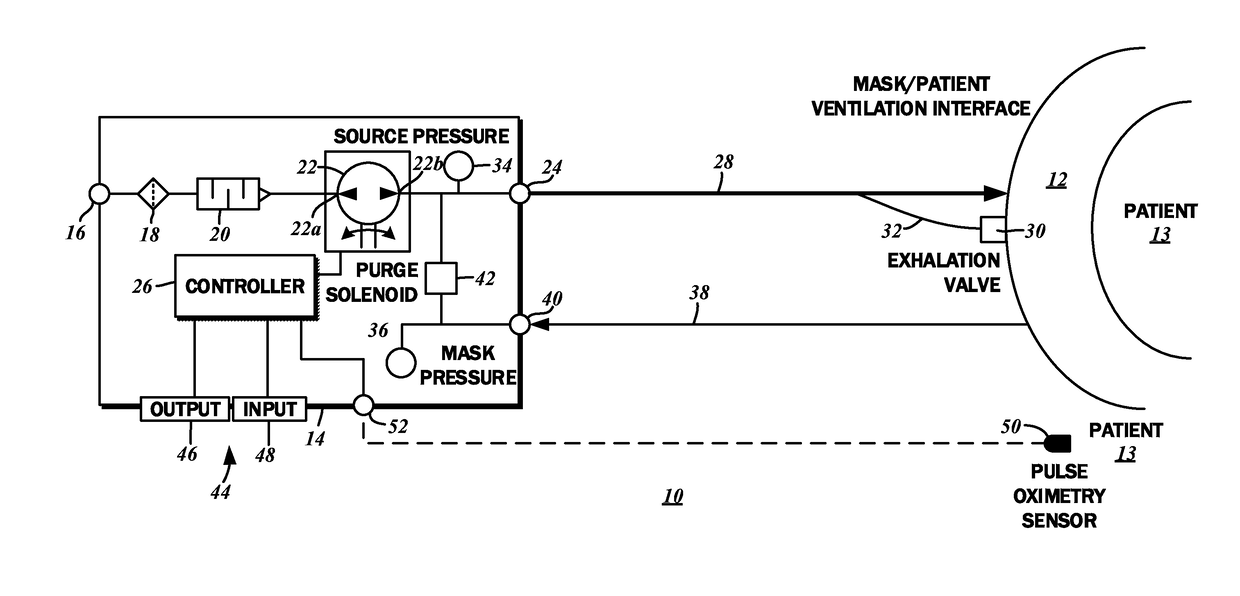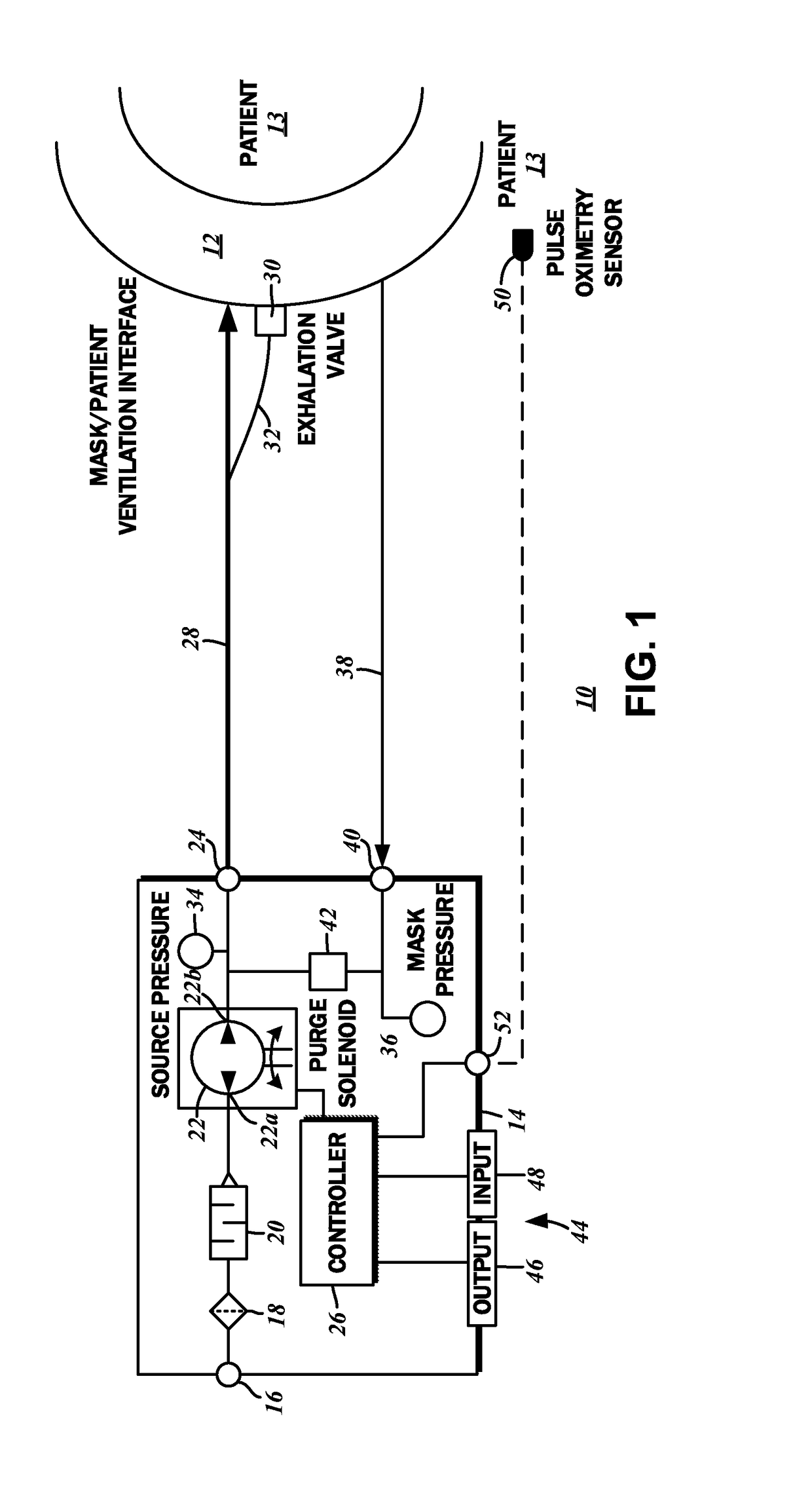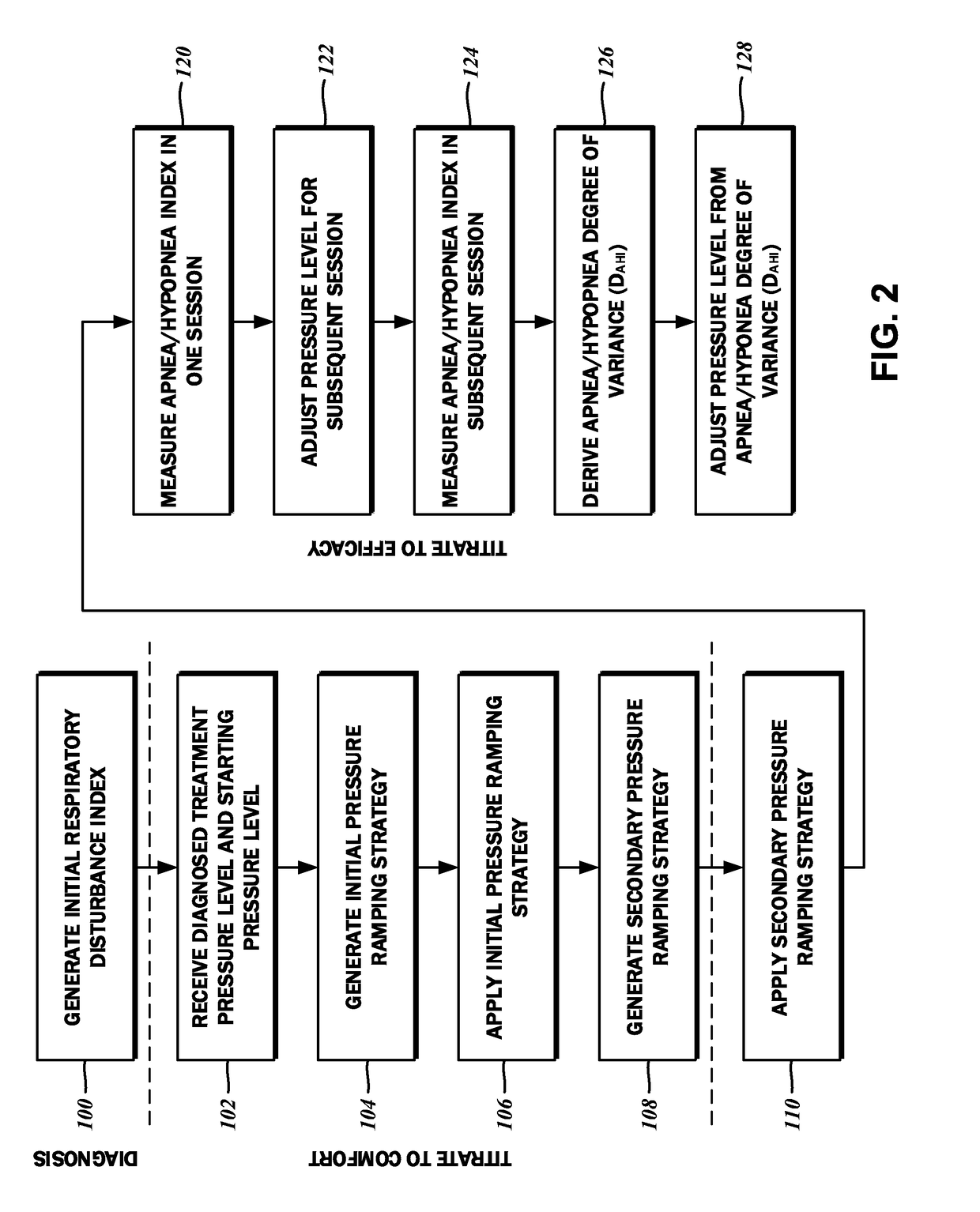Continuous positive airway pressure therapy auto-titration
a positive airway and auto-titration technology, applied in the field of respiratory conditions with continuous positive airway pressure (cpap) devices, can solve the problems of reduced blood oxygen saturation, daytime sleepiness, and discomfort of earlier patient breathing assistance devices, and achieve the effect of discouraging treatment compliance, increasing pressure, and minimal therapeutic effects of using cpap devices
- Summary
- Abstract
- Description
- Claims
- Application Information
AI Technical Summary
Benefits of technology
Problems solved by technology
Method used
Image
Examples
Embodiment Construction
[0026]The detailed description set forth below in connection with the appended drawings is intended as a description of certain embodiments of the presently disclosed auto-titration for continuous positive airway pressure therapy. Generally, treatment begins with diagnosis, followed by titration to adaptation and comfort e.g., ramping up pressure in accordance with the patient's comfort level, and then evolving titration to reduce the patient's apnea / hypopnea index.
[0027]The description sets forth the various functions in connection with the illustrated embodiments, but it is to be understood, however, that the same or equivalent functions may be accomplished by different embodiments that are also intended to be encompassed within the scope of the present disclosure. As such, the particular disclosures herein are not intended to represent the only forms that may be developed or utilized. It is further understood that the use of relational terms such as first and second and the like ...
PUM
 Login to View More
Login to View More Abstract
Description
Claims
Application Information
 Login to View More
Login to View More - R&D
- Intellectual Property
- Life Sciences
- Materials
- Tech Scout
- Unparalleled Data Quality
- Higher Quality Content
- 60% Fewer Hallucinations
Browse by: Latest US Patents, China's latest patents, Technical Efficacy Thesaurus, Application Domain, Technology Topic, Popular Technical Reports.
© 2025 PatSnap. All rights reserved.Legal|Privacy policy|Modern Slavery Act Transparency Statement|Sitemap|About US| Contact US: help@patsnap.com



